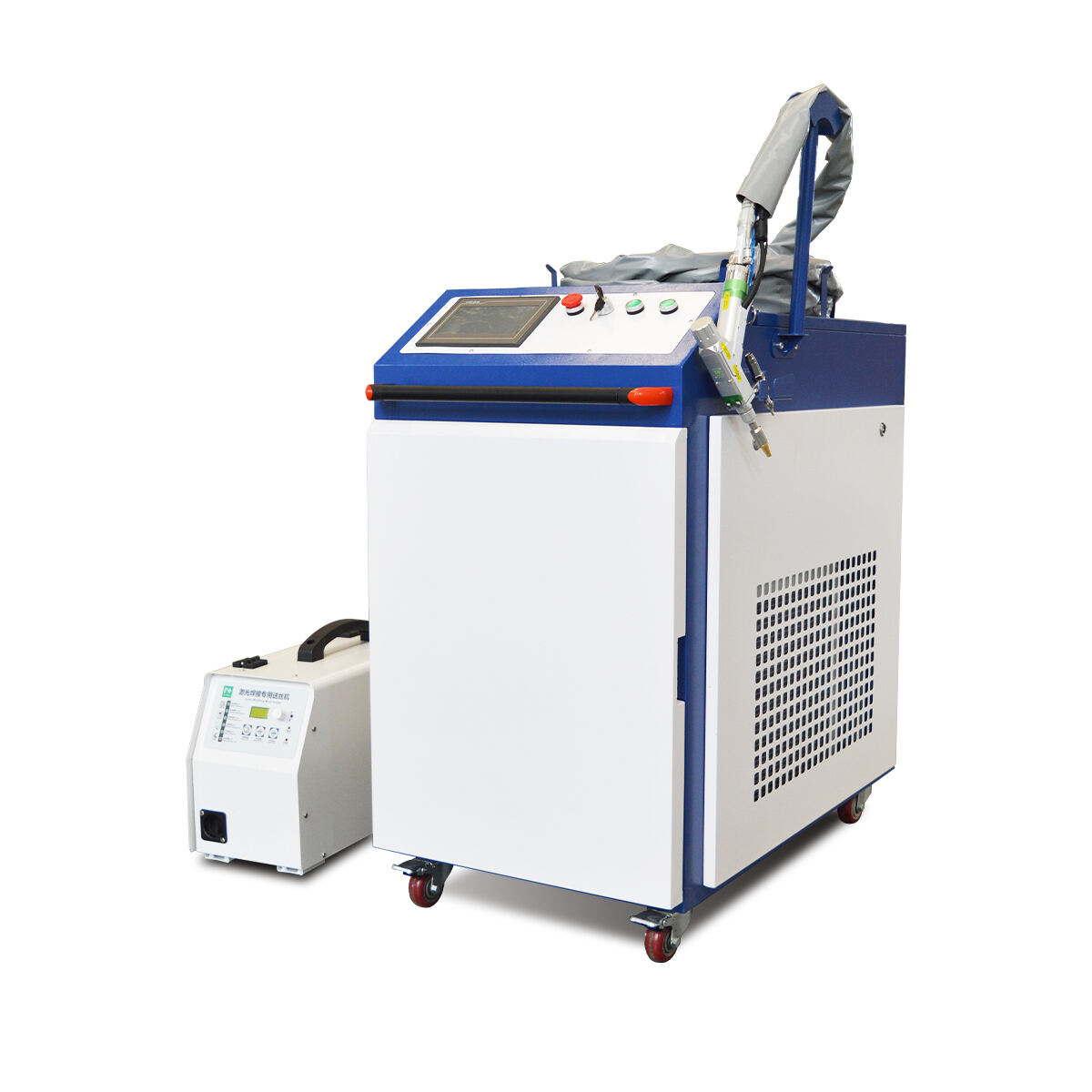What Are the Key Differences Between Laser Welding and Traditional Welding?
Fundamentals of Laser Welding vs Traditional Welding Processes
Core Principles of Laser Welding Technology
Laser welding is an advanced method leveraging focused laser beams to melt and fuse materials, providing superior speed and effectiveness compared to traditional techniques. The technology operates on key principles such as beam focusing, energy density, and welding speed, all crucial for producing high-strength, low-distortion welds. Specifically, by concentrating the laser energy, this method minimizes heat affected zones, resulting in less thermal distortion and enhancing the precision of the weld. Moreover, laser welding typically occurs within an inert atmosphere, reducing oxidation and improving the quality of the joint significantly. This process is particularly advantageous in applications requiring intricate precision, such as the aerospace or electronics industries, where minimizing any potential material distortion is critical.
Key Characteristics of Traditional Welding Methods (TIG, MIG, Spot Welding)
Traditional welding methods, including Tungsten Inert Gas (TIG) and Metal Inert Gas (MIG) welding, rely heavily on filler materials and heat generated through arcs, leading to an increase in thermal distortion. These methods are favored for their versatility and effectiveness across a wide range of metals; however, they often lead to longer weld times and larger heat-affected zones compared to laser techniques. TIG welding is praised for its precision and ability to work with various materials but can be less efficient with thicker sections. MIG welding stands out for efficiently handling thicker materials but may not provide the finesse needed for more delicate tasks. Meanwhile, spot welding is commonly utilized for sheet metals, offering effective joins but lacking the adaptability and range of joint designs possible with laser welding. This traditional approach has its place in many industries due to its established processes, though the constraints are evident when high precision and minimal distortion are required.
Performance Comparison: Speed, Precision, and Heat Management
Welding Speed and Production Efficiency
Laser welding offers remarkable speed, often surpassing traditional methods by achieving welding speeds of over one meter per minute. This acceleration directly translates into enhanced production efficiency, allowing for faster processing and reduced cycle times. By integrating laser welding into automated environments, manufacturers can replace extended traditional welding times with shorter cycles, leading to increased output rates and higher overall productivity.
Precision and Heat-Affected Zone (HAZ) Differences
The precision of laser welding is renowned for its capability to achieve extremely tight tolerances, resulting in a significantly reduced heat-affected zone (HAZ). With a HAZ often less than 1 mm, laser welding preserves the material properties and ensures minimal distortion. This aspect is crucial for high-performance applications where maintaining the integrity of the material is paramount, such as in aerospace and electronics industries.
Distortion Control in Thin Materials
Laser welding excels in minimizing distortion in thin-walled materials due to its exceptional control over heat input. This capability is especially vital in sectors like electronics, where precision and material integrity are essential. By tailoring the spot size and energy density, laser welding reduces the thermal impact, safeguarding the structural integrity of delicate components and delivering precise, distortion-free welds.
Cost Analysis: Initial Investment vs Long-Term Savings
Equipment and Setup Costs for Both Methods
When considering laser welding machines, the initial investment is substantial, often ranging from $100,000 to $500,000, depending on the machine's technology and capacity. This is significantly higher than many traditional welding setups. However, this higher upfront cost is balanced by potential long-term advantages. The efficiency and lower maintenance demands of laser welding can offset these initial setup costs over time. It's essential to approach the purchase of a laser welding machine as a strategic investment in advanced manufacturing capabilities.
Operational Expenses and Maintenance Requirements
One of the significant advantages of laser welding is the reduction in operational expenses. Laser welding machines often use less filler material and generate less waste, resulting in lower energy consumption and material costs. Additionally, maintenance requirements for laser systems are typically less frequent than traditional welding setups. Laser welding systems have fewer moving parts, leading to reduced wear and tear, which translates into less downtime and lower maintenance costs. This efficiency in operation and maintenance signifies that, despite the high initial investment, laser welding can be more cost-effective in the long run.
ROI Considerations for High-Volume Production
For companies that are engaged in high-volume production, the return on investment (ROI) for laser welding machines is particularly favorable. The efficiency gains in terms of higher productivity and reduced material costs can lead to substantial savings over time. By improving cycle times and increasing production capacity, businesses can often recover their initial investment within a few years. This makes laser welding an attractive option for industries focusing on maximizing output and efficiency while minimizing long-term operational costs.
Material Compatibility and Application Scenarios
Metals Best Suited for Laser Welding Machines
Laser welding machines excel with specific metals, making them ideal for industries seeking high-quality welds with minimal defects. Stainless steel, aluminum, and titanium are among the best-suited metals for this technology. The concentrated heat and rapid cooling capabilities of laser processes ensure cleaner and stronger welds. For instance, laser welding of stainless steel results in seamless joints that exhibit enhanced corrosion resistance and aesthetic appeal. Likewise, the precise control of heat input makes lasers a preferred choice for working with aluminum, reducing the risk of warping and other heat-induced issues.
Traditional Welding Advantages in Thick Materials
Despite the innovations in laser technology, traditional welding methods remain advantageous in certain applications, particularly when dealing with thick materials. In scenarios requiring deeper penetration and robust bonds, techniques such as Tungsten Inert Gas (TIG) and Metal Inert Gas (MIG) welding are often preferred. These conventional methods dominate areas like heavy machinery and construction, where adaptability to varying material thicknesses is crucial. For example, TIG welding offers precise control over heat input, making it suitable for thicker sections where integrity and strength are paramount.
Industry-Specific Use Cases (Automotive, Aerospace, Electronics)
Laser welding finds diverse applications across various industries, each benefiting from its unique capabilities. In the automotive sector, the technique is employed for fabricating body structures and components, delivering exceptional strength and reduced weight. Aerospace industries utilize laser welding to handle lightweight materials essential for high-performance aircraft, enhancing fuel efficiency and structural integrity. Meanwhile, in electronics, laser welding is favored for intricate assemblies, ensuring precise and reliable connections in compact devices. Industry case studies consistently highlight efficiency improvements and quality enhancements achieved through laser welding, underscoring its transformative impact.
Voiern Laser Welding Machine: Advanced Joining Solutions
High-Energy Pulse Technology for Precision Welds
The Voiern laser welding machine utilizes high-energy pulse technology, allowing precise control over weld characteristics. This precision is essential for maintaining consistency across welding processes and minimizing energy waste, making it an ideal solution for applications demanding exact joint specifications. The high-energy pulse ensures that welds are repeatable and reliable, enhancing the overall efficiency of the operation and reducing the likelihood of defects.
Automation Capabilities and Process Control Features
Voiern's laser welding machines come with advanced automation capabilities, significantly reducing the need for manual intervention and enhancing production efficiency. This automation is particularly advantageous in high-volume manufacturing environments, where consistency and speed are crucial. Additionally, the machines are equipped with sophisticated process control systems that allow real-time monitoring and adjustments. These features ensure that each weld is performed optimally, maintaining quality standards while increasing production throughput.
Technical Specifications for Diverse Material Welding
The Voiern laser welding machines boast a comprehensive range of technical specifications, catering to diverse material needs. They encompass parameters like wattage, focal length, and welding speed, which are critical for tailoring the machine's performance to specific materials and projects. Users can leverage these specifications to ensure compatibility and efficiency, making informed decisions when selecting equipment for their manufacturing processes. By providing detailed guidelines, Voiern ensures that their machines meet the varied demands of different industries and material types.
Real-World Performance in Industrial Settings
Voiern laser welding machines have demonstrated exceptional real-world performance across various industrial applications. Numerous case studies highlight substantial productivity improvements and enhanced weld quality, validating the machines' utility and reliability in real-world settings. Industry feedback consistently points to high satisfaction levels, with professionals appreciating the machines' capabilities to meet demanding production requirements while maintaining superior quality standards. This positive reception underscores Voiern's commitment to delivering cutting-edge welding solutions tailored to industrial needs.



